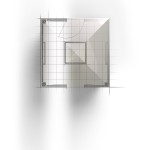How Vedic architecture helps us lead better lives
by Ruth Diab Lederer
 Modern scientists have almost caught up with the ancient rishis (sages) of India—on matters of wave theory, that is. A basic concept of Vaastu, with origins that date back to 10,000 BCE, is that energy is subtle and, over time, becomes gross. Nature’s waves take myriad forms in the physical world, including the human body. The human form has different qualities of energy that are expressed in our unique personalities, physiques and skin, hair and eye colors. The infinite variations in the human form are produced by unique combinations of energetic waves.
Modern scientists have almost caught up with the ancient rishis (sages) of India—on matters of wave theory, that is. A basic concept of Vaastu, with origins that date back to 10,000 BCE, is that energy is subtle and, over time, becomes gross. Nature’s waves take myriad forms in the physical world, including the human body. The human form has different qualities of energy that are expressed in our unique personalities, physiques and skin, hair and eye colors. The infinite variations in the human form are produced by unique combinations of energetic waves.
One key concept in Mayonic Science and Technology, or Vaastu, the ancient science of Vedic architecture, that relates to all forms, is the brahma sutra. Sometimes known as the “thread of golden light,” this subtle energy wave is contained in every form on earth. In the human form, it is generally considered to be parallel to the spine, and in architecture, it is the energy line that horizontally bisects a structure. We know that every wave in both the natural and manufactured worlds is unique, and thankfully, Vaastu has given us methods by which we can identify and benefit from these unique waves.
We have all experienced how the design of a space or building affects us. Every day we walk into stores, office buildings and our homes and have a feeling of “this is a great space” but cannot define further what about it actually resonates with us. It just feels good on some level. Similarly, some places just feel “off.” The waves of the human body and their interaction with the waves of the built environment is at the root of the “great space” experience and the “off” space as well. It is one thing to have a momentary experience of space being “great” or “off,” but what happens when you spend hours at work or at home in such a space?
The shape of a space significantly influences the type of activity in that space. For example, if the structure is circular, the energy is unsettled and the human body feels the chaos. Circular shapes are good for public spaces where people move through them, but the highly charged feeling in the space is not good for activities like concentrating at work or resting at home. On the other hand, square space that has been designed specifically for a family or business group can transmit stable, supportive energy that can strengthen the body and calm the mind. There is a growing body of evidence that shows that people who live in or merely nearby to Vaastu structures are experiencing better lives— emotionally, financially and physically.
A person trained in Vaastu uses a mathematical system to create stable, supportive, harmonious space. These mathematical formulae calculate 16 sets of characteristics, including the size of the perimeter. This is one of the most critical elements of the design, since the size of the space is fundamental in establishing the unique wave that will benefit the inhabitants. Another fundamental characteristic of the 16 is the location of the main door to the house. It can be on any side of the structure, but must be a specific size that relates to the perimeter, and must be in a specific location that is determined by the formula. Where the door opens along the building’s outside wall enforces certain energetic properties, and it is important that it is used as the main door. Opening and closing the door on the prescribed spot enlivens the energy of that spot and can impart benefits over and above those coming from the structure itself.
It all goes back to the unique wave of the person and the unique wave of the structure. When properly designed and executed, a Vaastu structure’s wave interacts with the wave of the human inhabiting the space. The two brahma sutras are in harmony, creating a space of positive, life-changing energy.
Ruth Diab Lederer is the principal of Vaastu Partners LLC. Contact her at ruth@vaastupartners.com for more information or to visit a newly built Vaastu cottage in Lake Bluff, Ill.

























No Responses to “Karma by design”